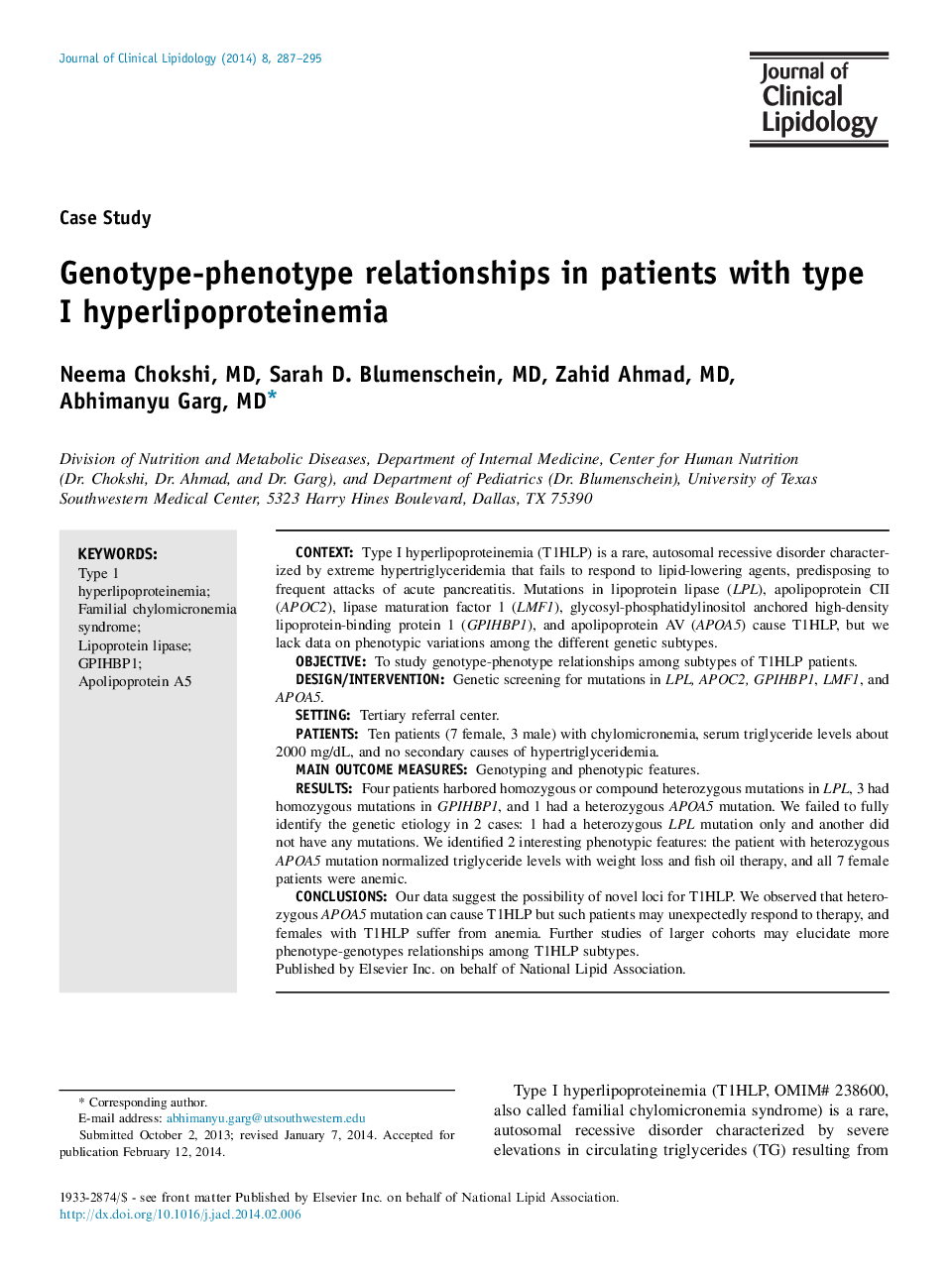| کد مقاله | کد نشریه | سال انتشار | مقاله انگلیسی | نسخه تمام متن |
|---|---|---|---|---|
| 2966025 | 1178789 | 2014 | 9 صفحه PDF | دانلود رایگان |

► We studied patients with varying genetic causes of type 1 hyperlipoproteinemia.
► We noted anemia in all female type 1 hyperlipoproteinemia patients.
► Patients did not respond to lipid-lowering agents except for 1 subtype.
► Not all cases had an identifiable genetic cause.
► New, undiscovered loci may exist for type 1 hyperlipoproteinemia.
ContextType I hyperlipoproteinemia (T1HLP) is a rare, autosomal recessive disorder characterized by extreme hypertriglyceridemia that fails to respond to lipid-lowering agents, predisposing to frequent attacks of acute pancreatitis. Mutations in lipoprotein lipase (LPL), apolipoprotein CII (APOC2), lipase maturation factor 1 (LMF1), glycosyl-phosphatidylinositol anchored high-density lipoprotein-binding protein 1 (GPIHBP1), and apolipoprotein AV (APOA5) cause T1HLP, but we lack data on phenotypic variations among the different genetic subtypes.ObjectiveTo study genotype-phenotype relationships among subtypes of T1HLP patients.Design/InterventionGenetic screening for mutations in LPL, APOC2, GPIHBP1, LMF1, and APOA5.SettingTertiary referral center.PatientsTen patients (7 female, 3 male) with chylomicronemia, serum triglyceride levels about 2000 mg/dL, and no secondary causes of hypertriglyceridemia.Main Outcome MeasuresGenotyping and phenotypic features.ResultsFour patients harbored homozygous or compound heterozygous mutations in LPL, 3 had homozygous mutations in GPIHBP1, and 1 had a heterozygous APOA5 mutation. We failed to fully identify the genetic etiology in 2 cases: 1 had a heterozygous LPL mutation only and another did not have any mutations. We identified 2 interesting phenotypic features: the patient with heterozygous APOA5 mutation normalized triglyceride levels with weight loss and fish oil therapy, and all 7 female patients were anemic.ConclusionsOur data suggest the possibility of novel loci for T1HLP. We observed that heterozygous APOA5 mutation can cause T1HLP but such patients may unexpectedly respond to therapy, and females with T1HLP suffer from anemia. Further studies of larger cohorts may elucidate more phenotype-genotypes relationships among T1HLP subtypes.
Journal: Journal of Clinical Lipidology - Volume 8, Issue 3, May–June 2014, Pages 287–295